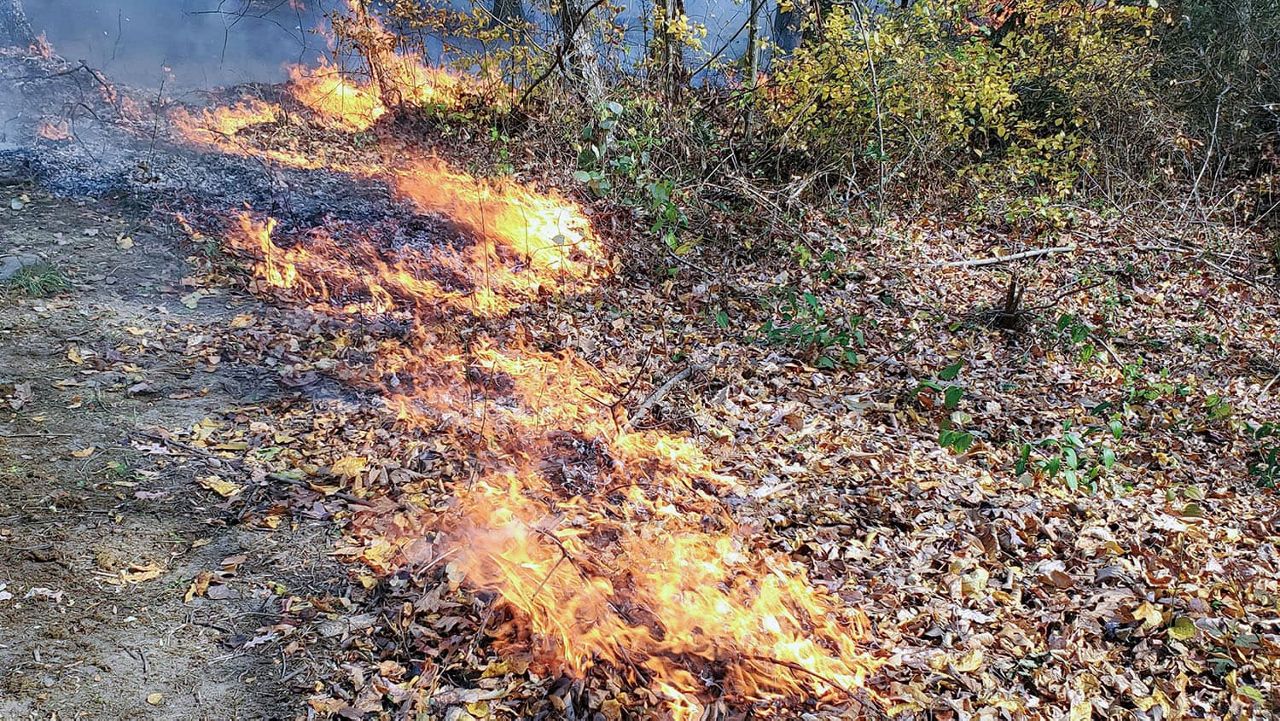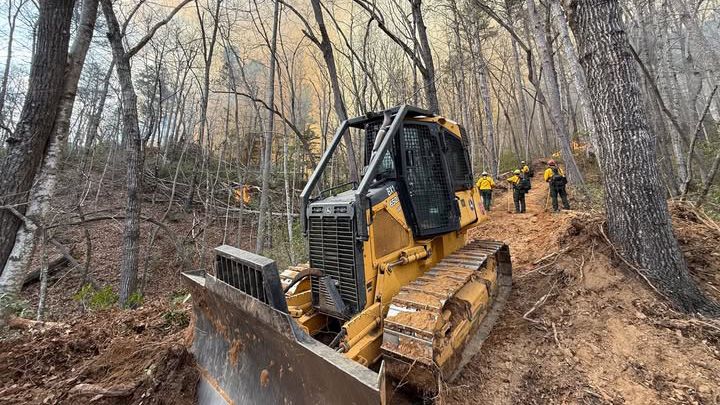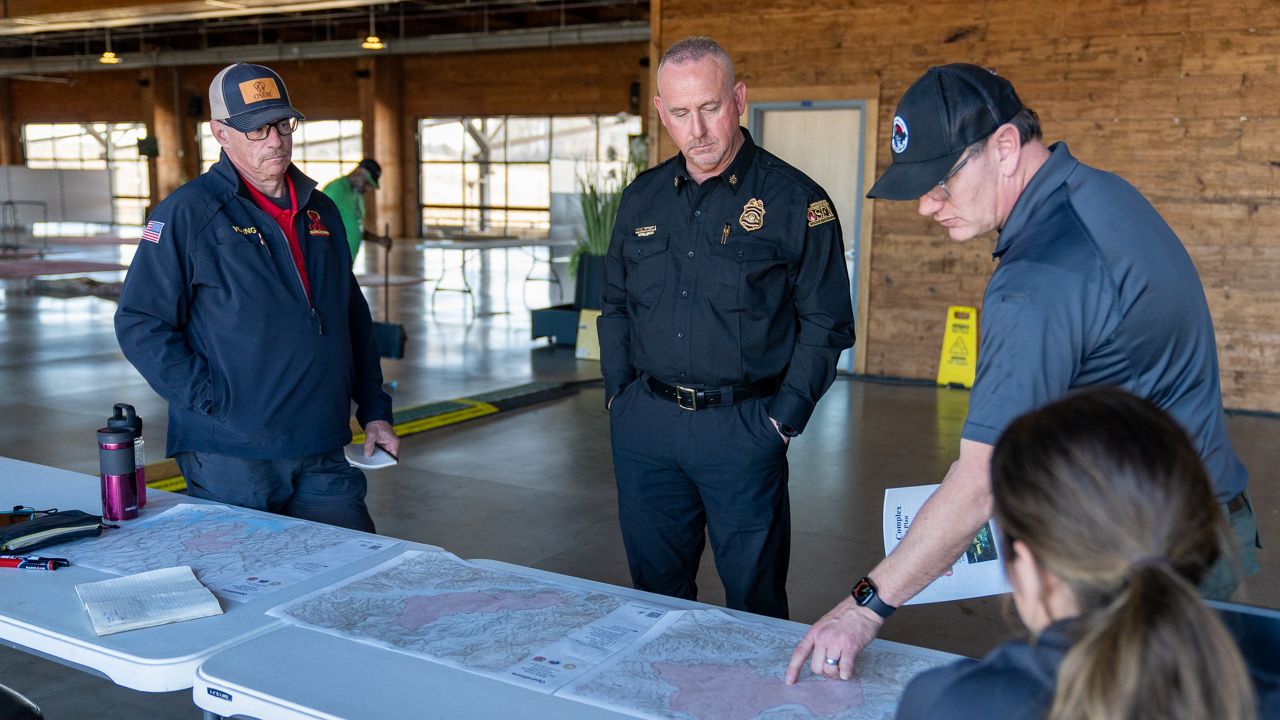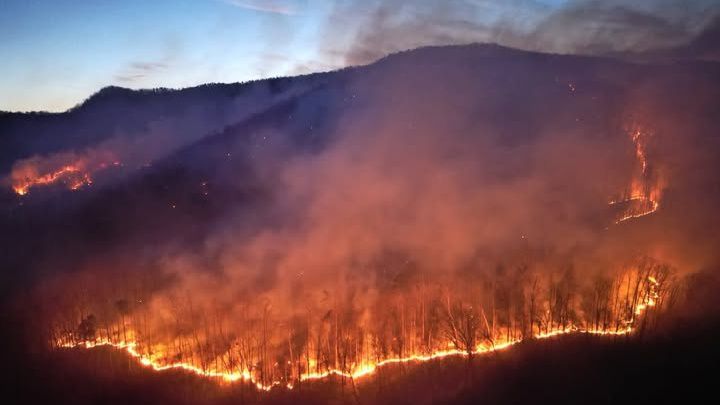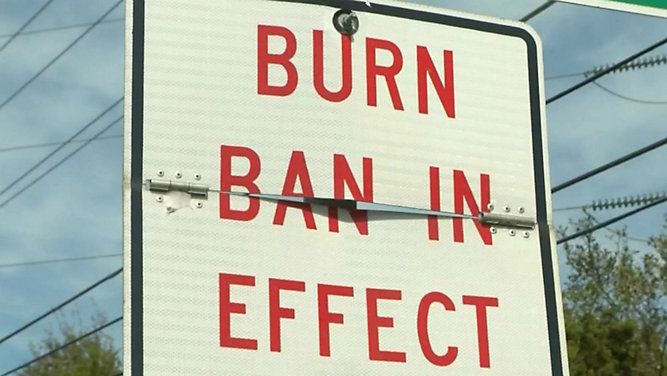As wildfires continue to burn and threaten homes in western North Carolina, firefighters are using strategic firing operations to help get them under control.
Strategic firing methods are carefully planned tactics used by firefighters to eliminate things that could spread wildfires, including grasses, plants, shrubs, leaves, needles, duff and dead woody material.
Cause of fires?
According to the N.C. Forest Service, 30% of the Poplar Drive fire in Henderson County is contained as of Friday afternoon with some contributions of strategic firing.
“Firefighters completed the burning as quickly, efficiently and safely as possible,” said Incident Commander Kevin Harvell in a statement. “The burn resulted in bringing the fire edge to the already established containment lines, making them more defensible.”
As of Friday, the cause of the Poplar Drive fire in Henderson County is unknown. However, the North Carolina Forest Service has stated on its website that careless debris burning is the leading cause of wildfires in the state. The agency urges the public to be mindful of burning and stay prepared.
How fires are fought
Sometimes putting out flames is not the best way to stop a widespread fire, according to the U.S. Fire Service Lake Tahoe Basin Management Unit. When successful, strategic firing helps to contain the main fire’s perimeter and prevent it from gaining momentum.
The method requires careful planning and coordination. Areas are carefully evaluated and looked over by fire behavior analysts, agency administrators, safety officers and the incident commander.
By burning away any things that could potentially cause fires to spread, it allows firefighters to create lines of containment around the main fire.
Crews across western North Carolina have also used this method to try to contain fires other than the Poplar Drive blaze.
The areas are prepped beforehand by removing any debris or trees that could pose danger, creating control lines.
Risks of fighting fire with fire
All resources including aircraft, weather, fuels, topography and safety measures must align to make sure that the operation is completed safely and effectively. Fire crews must stay alert of any spot fires that may arise outside of the containment lines because of the heat.
Areas surrounding the roots of plants are loosened and become weak due to the fire eating away at the organic material in the soil, making them more prone to falling.
“If the vegetation falls over and the leaves fall onto the smoldering areas, the fire could reignite and throw embers,” said Operations Section Chief Dwayne Vigil in a statement.
The U.S. Forest Service said in a post on Facebook that light rain is forecast Friday in the areas of the fires and expected to continue through the weekend. However, unless the state sees sufficient rainfall, the fire activity is expected to continue and spread.





